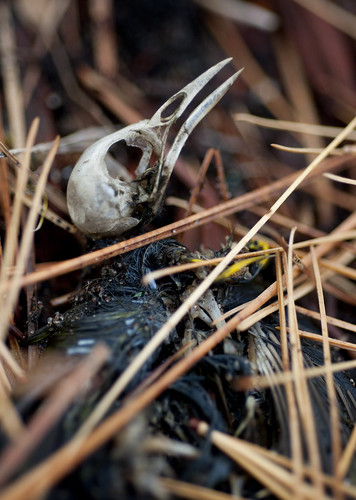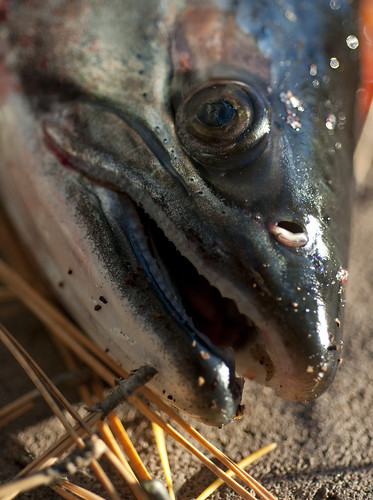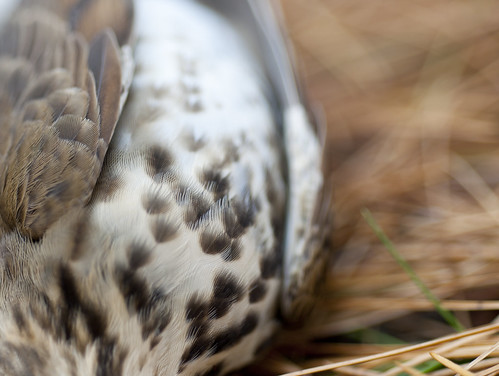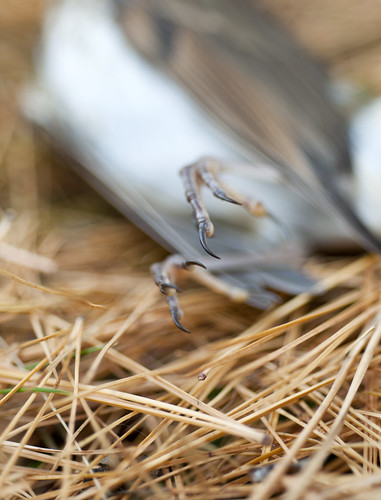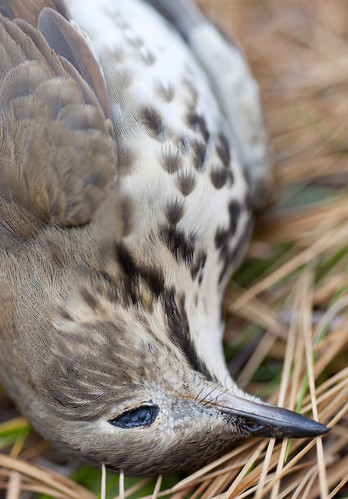At some point over the summer, a warbler collided with our window, fell beneath the hostas, and died. Like most animal deaths, it went unnoticed — at least, by humans. In the months that followed, decomposers and scavengers consumed the carcass, eating flesh, organs, connective tissues, and even the smaller, softer feathers. Left behind was a skeleton, tiny and fragile, primary feathers still clinging to the bones.
Some months after the warbler's death, it was finally discovered by human eyes. Fallen needles from a nearby red pine had already concealed much of the carcass.
I was struck by the fragility of the skeleton, and the fact that it had weathered several months in the same spot, undisturbed and intact. The skull of the bird still pointed to the sky, in a seeming act of defiance of being reabsorbed into the earth.
How many animal deaths go unnoticed by human eyes? How many birds have struck our windows? How many reptiles and amphibians are hit on the road, unseen at high speed? How many organisms are fed by these deaths? As the autumn landscape turns to a palette of browns and grays, look for those that have passed during the summer months. Discover their bones, ask questions, and learn something from them.

